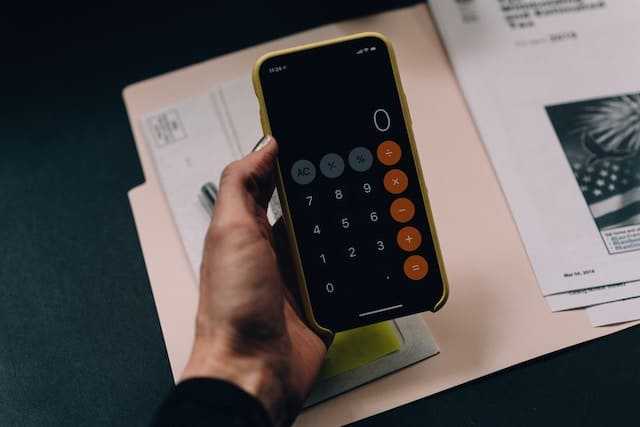Fixed vs. Variable Interest Rates: What’s the Difference?
When you apply for a personal loan or credit card, the lender may give you a choice between a fixed rate vs. variable rate. Each of these options comes with pros and cons, and your selection can impact how much interest you’ll pay over the life of your loan.
So how do you decide? Here’s an overview of the differences between fixed and variable rate loans and credit cards, including how they work and how to determine what’s right for you.

What is a fixed interest rate loan?
With a fixed rate loan, your interest rate never changes. You lock in an interest rate when you take out the loan, and your rate and monthly payments remain the same throughout the repayment period.
Having a consistent monthly payment can make it easier to plan your budget and avoid missing payments. But in exchange for this predictability, fixed rate loans often come with higher initial interest rates than variable rate loans.
In general, personal loans come with fixed rates; variable rate personal loans are more uncommon.
What are variable interest rate credit products?
With variable rate credit products, the interest rate can move up or down. These movements are tied to changes in an underlying index (discussed below), and your interest rate may reset on a monthly, quarterly or annual basis depending on the terms of your loan or your credit card agreement.
When interest rates reset, so does your monthly loan payment or the amount you owe on your credit card balance. This can make it extremely difficult to develop a monthly budget that you can follow consistently. Variable rate loans tend to have lower initial interest rates than fixed rate options because of the risk that rising rates will increase your borrowing costs.
How do variable interest rate products work?
Most variable rate credit products are tied to an underlying interest rate index, such as the prime rate or the London Interbank Offered Rate (LIBOR.) If the corresponding index rate goes up, your loan’s interest rate and monthly payment will also rise. But the opposite is also true—if these rates fall, so will your loan’s interest rate and monthly payment.
Almost all credit cards come with variable rates tied to the prime rate. When the Federal Reserve raises interest rates, chances are highly likely the prime rate will also rise. This means the interest you pay on your outstanding balance and your minimum payment could increase as soon as your next monthly bill.
Most lenders put a cap on variable rate loans to limit how much the interest rate can rise over time. If it’s a lifetime cap, the rate will never go above a pre-determined interest rate—no matter how much the index rises during the life of the loan.
Deciding between fixed vs. variable rate credit products
In order to decide whether a fixed rate vs. variable rate loan or credit card is right for you, you should assess the interest rate environment, your risk tolerance and your monthly budget. (You can also read our blog to help you decide which type of credit is right for you: personal loan vs. credit card.)

For example, if interest rates are high, a variable rate loan may seem more attractive. If rates drop during your repayment period, you’ll enjoy a lower monthly payment. But if rates rise, your monthly payment will increase. Taking on a variable rate loan means you need to be prepared for this scenario and ensure your budget can afford bigger monthly payments.
Fixed rate loans provide you with the predictability of set monthly payments. With a fixed rate loan, you can calculate the total cost of your loan because your interest rate is locked in from day one. On the flip side, if rates fall, you’ll be stuck paying a higher-than-market-rate for the life of your loan (unless you’re able to refinance).
Fixed Rate vs. Variable Rate Credit Products
| Fixed Rate Credit Products | Variable Rate Credit Products | |
| Interest Rate | Initial interest rate is locked in for the life of the loan. | Interest rates can rise and fall depending on market rates. |
| Monthly Payment | Monthly payment never changes after your loan closes. | Monthly payment will fluctuate up or down depending on interest rate movements. |
| Pros | You can depend on a fixed interest rate and monthly payment. | They may come with an initial promotional rate that may be lower than the initial rate of a comparable fixed rate loan. |
| Cons | In a rate environment in which the Fed lowers interest rates your rate won’t be lowered in lockstep with it. | Your interest rate could rise, resulting in a higher monthly payment if you keep an outstanding balance. |
| Type of Credit That Typically Offers This Interest Rate | Personal loans | Credit cards |
The best loan? One you can pay on time
Whichever option you pick, it’s crucial you choose what you can afford. Paying your bills on time, every time, is one of the best things you can do for your credit score. Consider using automatic bill payment to avoid missing a payment—especially if your variable loan payment will fluctuate over time.
Ready to apply for a personal loan? Upgrade’s application is quick and easy. You’ll get a decision in seconds—and checking your rate won’t affect your credit score.


